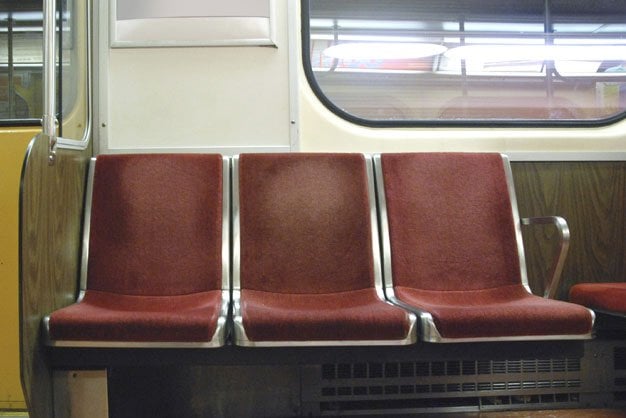
Sheppard subway The 5.5-kilometre stub running east from Yonge to Don Mills serves just 48,250 trips on an average weekday (6.6 per cent of what the Yonge-University line gets), only 2,530 of which take advantage of Bessarion – it’d be the TTC’s least-used station if not for Ellesmere on the Scarborough RT line [pdf]. Like every transit project in Toronto, its genesis was convoluted, but it was the darling of former North York (then Toronto) mayor Mel Lastman, who managed to keep the dream alive even as the Mike Harris government kiboshed other lines. “Without [Sheppard], we might as well go out of business,” Lastman said in 1995. When, the next year, Metro council surprised even itself by voting to spend $130 million to dig tunnels without stations or tracks, the Star ran one of those perfect Toronto transit headlines: Chaos As Council Approves A Train To Nowhere. Luckily for Metro, the province considered this a demonstration of sufficient commitment and gave them the rest of the money.
Toronto-York Spadina Subway Extension The density around Downsview Park, York University and the line’s terminus in York Region didn’t, still doesn’t and may never support a subway. So why are we getting it? “A senior TTC official describes the planned Spadina subway extension into York Region as purely political, adding an expletive describing horse excrement for effect,” reported the Globe. The line was the baby of former provincial finance minister Greg Sorbara, a York alumnus whose Vaughan riding would be at the route’s edge. Originally announced with a 2015 opening at a cost of $1.5 billion, it’s now set to be finished at the end of 2017, at a cost of a billion more.
Union Pearson Express Not a subway, of course, and barely even public transit, the UP Express remains a tribute to bizarre transportation priorities. Envisioned as a private project called Blue 22 to be built and run by SNC-Lavalin, the train was announced in 2003 with an opening date of 2008. It would cost $20 for a 22-minute ride from Union Station to Pearson Airport. That didn’t happen. By 2010, the province wanted something ready for the Pan Am Games and decided that it should be a public project instead they handed responsibility to Metrolinx, which spent $456 million on the service, including – as the Star revealed – $4.5 million to commission branding that would “lure choice riders.” It opened earlier this year, with a $27.50 fare for a 25-minute trip (cheaper if you get on or off at Bloor or Weston).
The train is officially hitting its modest ridership goals, but there’s a very long way to go before it could possibly break even on its operating costs. In the meantime, we can dream about how half a billion dollars could have built transit for underserved Torontonians rather than the premium class of business travellers who are now saved the embarrassment of taking a cab.
The line on downtown relief
The problem: The Yonge subway line is crowded, especially during rush hour and especially south of Bloor. Holy crap, is it crowded. In peak periods, it’s actually running 11 per cent above its current capacity of 28,000 passengers per hour per direction (pphpd).
The bigger problem: A number of short-term solutions are being implemented to squeeze in more capacity (including automatic train control that will allow the trains to run closer together), increasing it to 36,000 pphpd in a few years. The Toronto-York Spadina Subway Extension will ease pressures a bit, as will the province’s Regional Express Rail (RER) plan to run trains along GO corridors more frequently. But with expected population growth, the Yonge line will once again be flirting with disaster by 2031, and there won’t be any quick fixes left [pdf].
The false solution: SmartTrack may have its merits, but it wouldn’t relieve pressure on the Yonge line to any significant extent. Metrolinx looked at the effect that an enhanced RER (essentially SmartTrack) would have and determined it’d pull away only 400 southbound riders per hour in the morning peak.
The real solution: A proper relief line downtown. The city is studying a subway that would connect King or Queen (and maybe St. Andrew or Osgoode) to Broadview or Pape station on the Danforth. Metrolinx estimates such a route would suck 6,000 passengers away from the Yonge subway and another 6,100 from the Bloor-Danforth line during the morning peak. And if the relief line continued past Danforth all the way up to Sheppard and Don Mills, that’d divert 11,600 riders off Yonge.
The bigger problem, part 2: A relief line would cost $3.5 billion if it connected downtown to the Danforth or $7.8 billion if it went up to Sheppard. And there’s no money for the project, despite its officially being a top priority for the city, TTC and Metrolinx. At the moment, it stands behind both the Scarborough Subway Extension and SmartTrack in the funding line. Given how long it takes to build a subway, we have to get this shit sorted out soon.
Sources: Metrolinx, City of Toronto, TTC
Don’t miss: Train wreck: Why Toronto doesn’t get the transit it deserves












